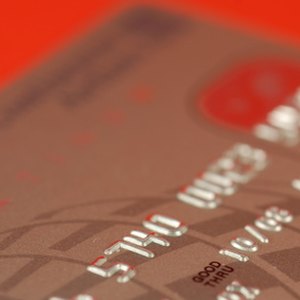
While a prepaid credit card comes in handy when you don't want to carry cash, or you want to do some online shopping, they are also extremely useful in an emergency situation. Whether you need to send money to the utility company or use IRS online access to pay back taxes, prepaid credit cards can be used the same day you buy them.
What They Are
Many people who have no credit or bad credit turn to prepaid credit cards. A prepaid credit card is a card that allows you to "charge" or debit purchases up to a cash amount that you place on the card. Prepaid credit cards come with a MasterCard or Visa logo; however, they do not operate as true credit cards, because the issuing company is not taking any risk by allowing you to have it.
Interest Charging Cards
One type of prepaid credit card charges interest on purchases. The prepaid cards that charge interest typically require you to send in a security deposit prior to receiving the card to determine the card's credit limit. If you send in $200 your credit limit will usually be $150 to $175. Most such cards have a minimum deposit required and a maximum deposit allowed. Typical limits are from $200 to $10,000. When you charge a purchase using your prepaid credit card, you are sent a bill, and given a grace period in which to pay the bill. The interest due on the bill is typically higher than a non-secured credit card would charge. If you default on the bill, your security deposit is fvffffffv5ttttttttttttttttttttttused to close out the balance and the account. For prepaid credit cards that charge interest in purchases, you typically cannot use them the day you buy them. You have to send in the security deposit and await the card's arrival in the mail before you can activate it and use it.
Non-Interest Cards
There are also prepaid debit cards that can be used like credit cards. There is no security deposit required; however, you must load money onto the card, and each time you use the card the money is deducted. These cards work like bank issued check debit cards but are not tied to an actual bank. You can generally load money on them from several locations, such as department stores, convenience stores and check-cashing places. In some cases, you apply for the card online and the card is sent to you in the mail at which point you go and load the money on. Each time your balance runs low you simply load it again. These cards can be run as credit cards at merchants though they are not true credit cards. You can use these the day you load the money. There are cards available for immediate purchase and use. Greendot cards are one example of a prepaid card that can be used the same day. You purchase the Greendot card at your local retailer, load the money on the spot and within 30 minutes the money is accessible to use.
Fees
Prepaid credit cards come with fees. Some companies require an upfront activation fee, while others prefer to charge you a nominal fee each time you load cash to the card. Many prepaid credit card companies also charge the user a small fee each time the card is used. Most prepaid cards can be used to withdraw cash from ATM machines; usually for a $2 to $3 fee per transaction. In choosing your prepaid credit card, check the fee schedules, annual fees and activation cost, then choose the one that will work best for your lifestyle.
References
Writer Bio
Candace Webb has been writing professionally since 1989. She has worked as a full-time journalist as well as contributed to metropolitan newspapers including the "Tennessean." She has also worked on staff as an associate editor at the "Nashville Parent" magazine. Webb holds a Bachelor of Arts in journalism with a minor in business from San Jose State University.

